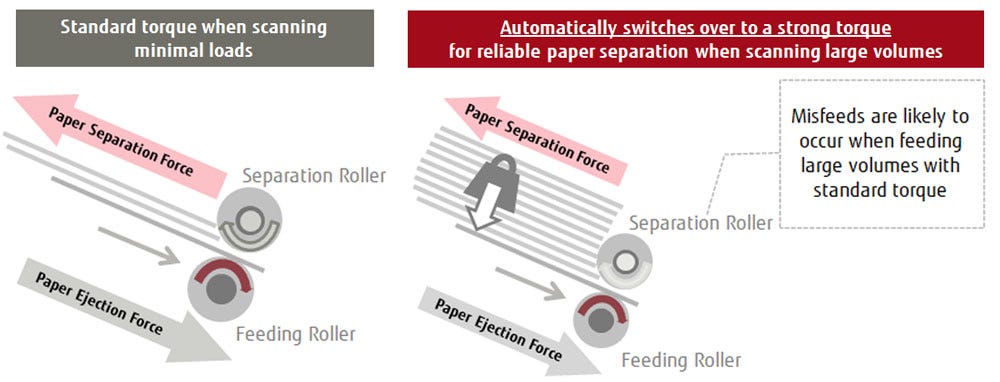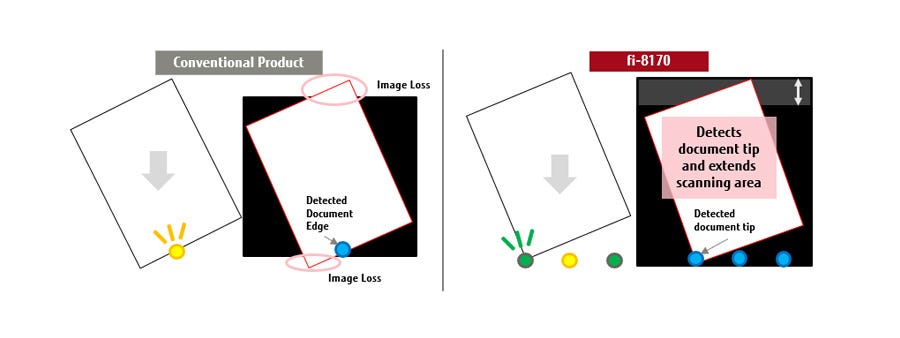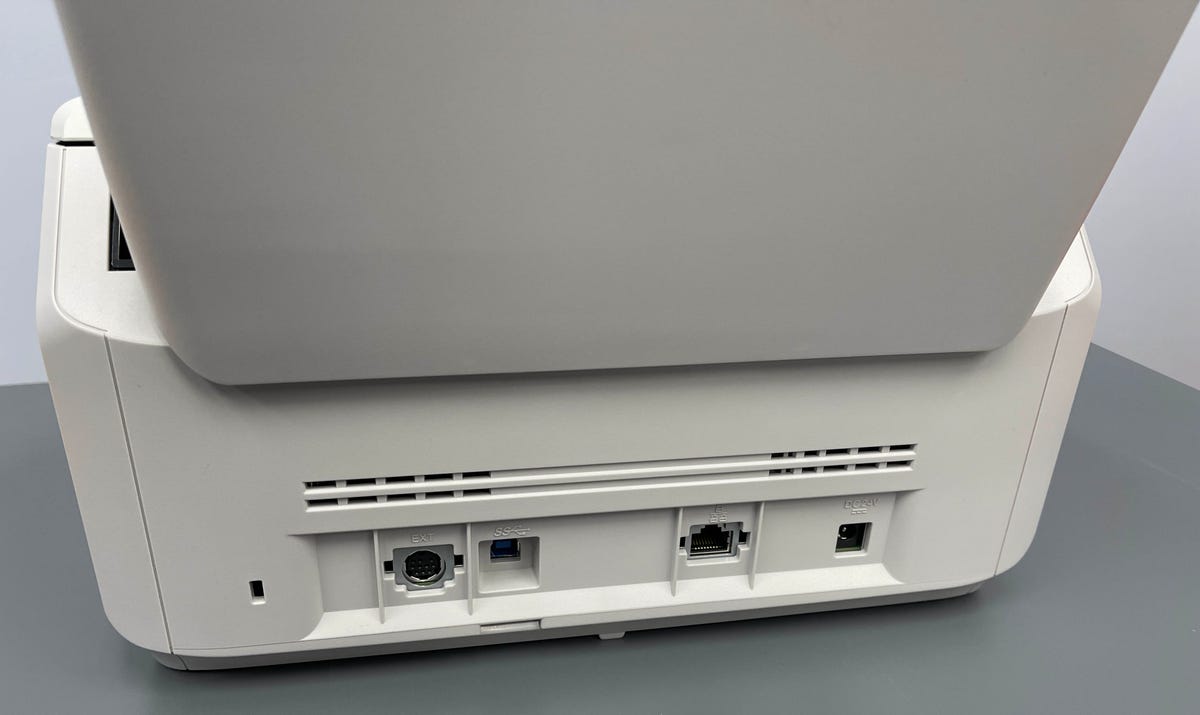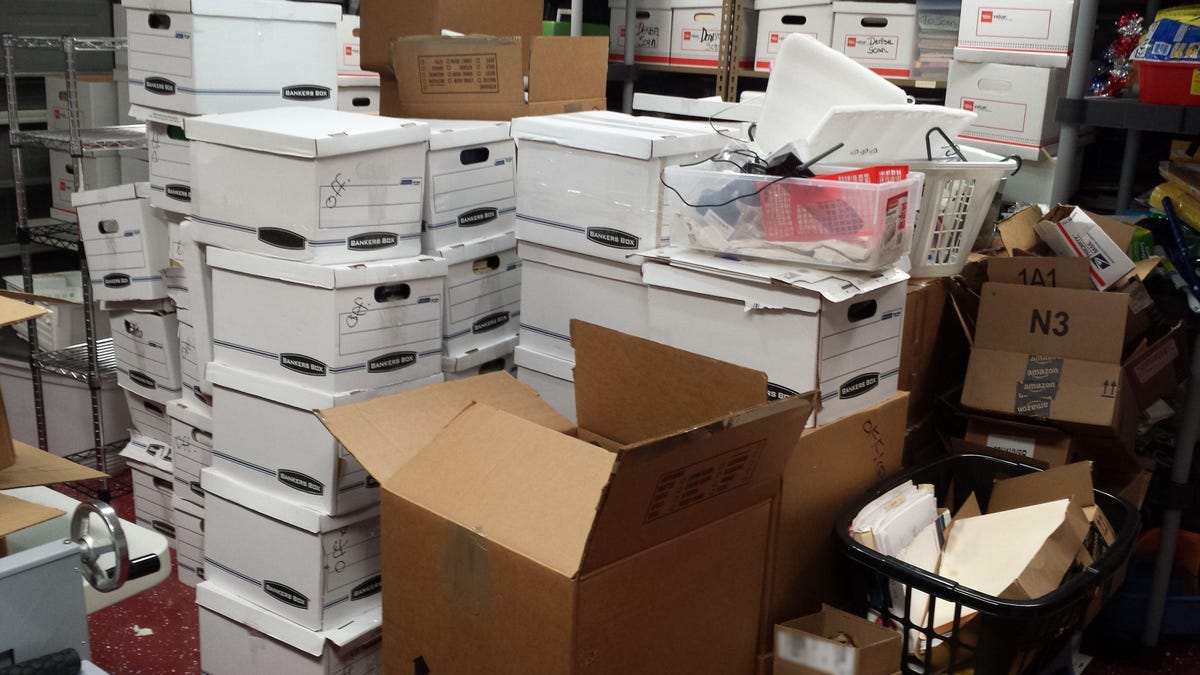I have reviewed a large number of scanners over the years. But I always come back to Fujitsu scanners. The reason is simple: they work. My wife and I bought four. They range in size from a desktop computer to a small handheld device. The oldest is about ten years old now, and all continue to function. We had to replace some consumables (like pads and rollers) because the friction of the paper wears down the rollers over time. Properly maintained, scanners continue to function.
So when Fujitsu asked me if I wanted to review their fi-8170 business scanner, I had to say yes.
Here are the specs of the fi-8170 scanner I tested:
- Scan speed: simplex 70 ppm at 200/300 dpi, duplex 140 ipm at 200/300 dpi
- Optical resolution: 600dpi
- Output resolution: 0 to 600 dpi, 1200 dpi via driver
- Output format: 24-bit color, 8-bit grayscale, 1-bit monochrome
- Booklet Thickness: 7mm or less
- Thickness of plastic cards: 1.4mm or less
- ADF capacity: 100 sheets
- Expected daily volume: 10,000 sheets
- USB interface: supports USB 3.2 Gen1x1, USB 2.0 and USB 1.1
- Ethernet: supports 10BASE-T, 100BASE-TX, 1000BASE-T
Fujitsu fi-8170 scanning performance
With an expected volume of 10,000 sheets per day, the fi-8170 is a beast, despite being almost exactly the same size and shape as the desktop ScanSnap it will replace.
First, the speed. It passes pages at 70 pages per minute. If you scan double-sided (both sides), it can capture 140 images per minute. Let’s put this into perspective. The book Harry Potter at the Sorcerer’s Stone is 309 pages. The iron Throne (the first book in the Game of Thrones series) is 694 pages. At 140 frames per minute, the fi-8170 could digitize them both in just over seven minutes.
Sure, you’ll be scanning business documents more often, but this gives you an idea of the speed of the scanner. He’s really, really fast. The automatic document feeder can hold up to 100 sheets, so the slowest factor in scanning performance will be how quickly you can load more paper.
When you’re scanning huge stacks of documents at super-fast speeds, there’s a problem. On many scanners, pages sometimes overlap, causing misfeeds. Fujitsu offers an interesting technology in the fi-8000 series, automatic separation control. As the volume of documents to be scanned increases, the scanner switches to a higher torque level. This flexibility helps ensure reliable document feeding.

Picture: Fujitsu.
The power management of this scanner is very smart. It can identify thicker documents (ID cards, credit cards, folders, envelopes, passports), allowing the device to avoid misfeeds. Moreover, it scans all these types of documents without any transport media.
Overscan protection is a feature that I found particularly nifty. Let’s say you are scanning a document and it is not quite straight in the scanner. On traditional scanners, part of the document may be missed. Typically, these corners have page numbers, dates, and various signatures, all of which are very important and should be preserved when scanning.
The fi-8170 detects misaligned documents and expands the scanning area to capture the edges of the image. It’s a bit like video stabilization in cameras. The camera captures a wider area to provide a stabilized image, but then rotates and crops each frame to ensure the video is smooth. The fi-8170 works similarly, but one frame at a time.

Picture: Fujitsu.
Overall image quality is excellent, as is color presentation. Unfortunately, the fi-8170 only has Ethernet and USB for connectivity. There is no Wi-Fi. After looking at other Wi-Fi scanners and the incredible flexibility they offer, it was really disappointing to realize that you couldn’t set up a central wireless scanning station with the fi-8170. It must be physically connected to your network or computer.

Image: David Gewirtz/ZDNet.
Fujitsu fi-8170 software
The software situation is a bit confusing for someone using the fi-8170 after the ScanSnap line. First of all, the well-known ScanSnap software cannot be found. The fi-8170, on the other hand, comes with two PaperStream-branded products.
PaperStream ClickScan does what its name suggests. It lets you place a document in the scanner, press the scan button directly on the scanner, and it scans. Click, and the document is scanned.
Then there’s PaperStream Capture Pro. It incorporates image correction and workflow functions, allowing scans to pass from employee to employee for indexing, quality checks and final filing. To use PaperStream Capture Pro, you also need to purchase the PaperStream Capture Pro QC/Index Station software, which allows an additional employee to assess the quality of the scan and process it accordingly.
This is where things start to go a little wrong. The fi-8170 does not come with Mac compatible software. PaperStream programs are for Windows only. Period.
Honestly though, I don’t think that’s a big loss for Mac users. As useful as the ScanSnap software has been over the years, I’ve always found it a little intrusive. And although you can’t run PaperStream on a Mac, you can still use the fi-8170. It’s just that Fujitsu doesn’t make an effort to tell users how to do it – but I will.
First, Fujitsu provides a downloadable driver for the Mac. Just click on this downloads page. Fortunately, it supports the latest version of macOS, Monterey, and goes all the way back to Catalina. Once the driver is installed, you can use the Mac’s built-in Image Capture utility to scan documents. Image Transfer works great with scanners and supports document loading.
Gary Rosenzweig at the wonderful site MacMost has an excellent free tutorial on using Image Capture, especially with scanners. So if Fujitsu doesn’t provide advice for Mac users, Gary certainly does.
Should you buy this scanner?
Do you really need this scanner? After all, at over $1,000, it’s three times as expensive as excellent document scanners, even Fujitsu’s ScanSnaps.
There was a time when a mixer company wanted to prove they were the most powerful on the market, so they started posting viral videos with the title “Is this going to mix? “. They threw all sorts of things into the blender, right down to an iPhone, which they smashed into small pieces. Most people don’t need a blender powerful enough to puree an iPhone, but we know which blender to buy if we do.
When it comes to scanners, think of it this way: do you want to mix a fruit drink or an iPhone? Do you need a sewing machine that can sew two pieces of fabric together? Do you need a jigsaw to cut off superfluous branches, or do you need a jigsaw to cut a clump of trees?
In short, do you need to scan a few documents once in a while, or suck an entire garage of documents from the cloud as fast as possible so you can get your life back?

Image: David Gewirtz/ZDNet.
Only you know whether you need a nice little scanner or a scanning monster. It’s up to you to decide. As for the review rating, we give it an 8.5 out of 10. The scanner itself is a very sturdy machine, but the software (and lack thereof for Mac and Linux) brings the rating down.
Source: ZDNet.com
